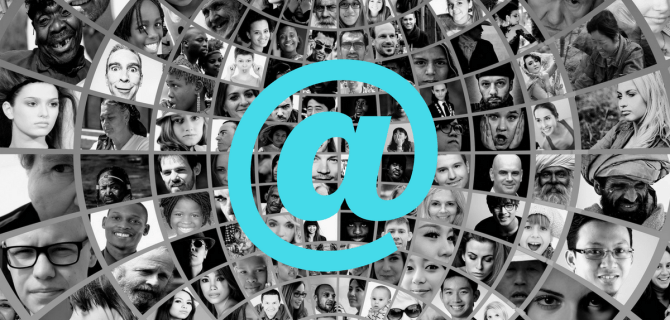What You Should Know to Build a Smart Tagging Strategy
By NRC on March 10, 2017

-By Erin Dixon-
You’ve written a valuable article that your audience is sure to love, and now you are ready to broadcast it. What’s your plan to ensure that the right people see your message at the right time? Perhaps you decide to email the story directly to your quoted sources (assuming you have their email addresses). Then you cross your fingers and hope everyone else who would be interested in the topic will happen to see it while scrolling through their social media feeds. Happily, there is a better way to catch the attention of your relevant audience than leaving it up to chance: tagging them.
If you are looking to build a solid tagging strategy for your local government organization, here are the basics and best practices of tagging on social media.
What?
Tagging is the most effective way to share your content directly with other relevant individuals and organizations. Tagging is supported on major microblogging sites (like Twitter), media sharing sites (like Instagram) and social networking sites (like Facebook and LinkedIn). A tag creates a link to the mentioned person’s profile page and also sends them a notification with the post they were tagged in. This ensures that the active user sees the post and has the option to engage with it.
Why?
Tagging is used for a number of reasons: to notify someone you are talking about them, create the opportunity to amplify post reach, give due credit and build relationships with followers and influencers on the Web. Tagging allows you build and speak directly to a community of individuals or groups who share interest in a certain industry, topic or event. Tagging can encourage shares and retweets, which amplifies the size of your audience. It also increases the potential for engagement with your content. When posting to Facebook, recent news feed algorithm changes prevent low-performing (organic) posts on organizational pages from ever making it into the feeds of most of their followers. Posts with more engagements will rank higher and thus have a much better delivery rate. So appropriate tagging can give official City Facebook pages a little boost in those engagements, and thus help them to reach more of their followers.
Who?
Relevancy is the currency of tagging. (You wouldn’t want to send your bike-obsessed, ten-year-old nephew a potpourri basket. The same concept is true for tagging.) Were there interviews and information sources in the article you are posting? Tagging is one way to give appropriate credit to all those mentioned in the story. Also consider tagging your contacts and partner organizations who may find the subject matter interesting or useful. Tagging is also useful when sharing photos. Who is in the picture? They would love to see it, so tag them.
How?
To tag someone in the text field of a post, simply place the “@” symbol before the username of a person, organization or company profile. You can also tag people in images. Twitter allows for up to 10 tags on a photo post. Facebook and Instagram have a much higher limit to the number of tags (50!) on photos, but best practices usually keep to around 10 tags as to not distract your viewers from the content itself. (But hey, if your entire intramural college sports team of 30 is shown in the picture, it’s OK to tag them all.)
Tagging is more limited on LinkedIn. Company/Organizational administrator pages cannot tag any posts. But LinkedIn does allow for individuals to tag. If you are the administrator for your City’s LinkedIn page and you want to tag relevant connections, look for the post in your news feed. Then, as an individual, you can share the post to your own following and tag others using the “@” and their name.
A Few Extra Tips
- Preach to the Choir – Tagging works best when you are sending people content that they can agree with or that casts them in a positive light.
- Stay Relevant – Don’t tag people or organizations who would have no interest or nothing to do with the topic or the post itself.
- Avoid Tag Fatigue – Don’t tag the same person too many times on posts about the same thing. It’s great when other people are also tagging that person and sharing your posts, but your own page stream should be diverse. Also, don’t tag the same person too many times in the same day. They will likely block you if their notification list is overwhelmingly full of spammy posts from you.
- Build a Tag Strategy – Develop and share a strategy around your organization’s tagging practices to create a more cohesive communications team, allow for innovation and get the most out of tagging. As one shoe does not fit all feet, your strategy should be unique to your organization. Look over your social media analytics to understand what is working well for you and what is not. Test and compare different ideas and practices when deciding what to include into your strategy.
This article orginally appeared on ELGL.org
Related Articles
Popular posts
Sign-up for Updates
You May Also Like
These Related Stories

What are Residents Saying About Local Law Enforcement?

Top Ten Facebook Tips for Local Governments
.jpg)
